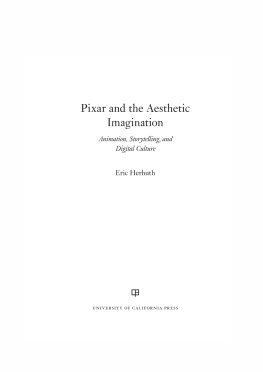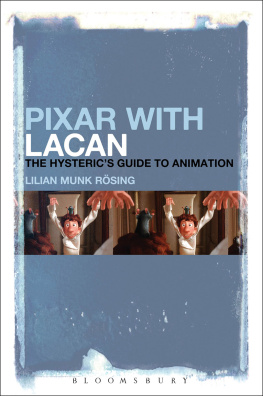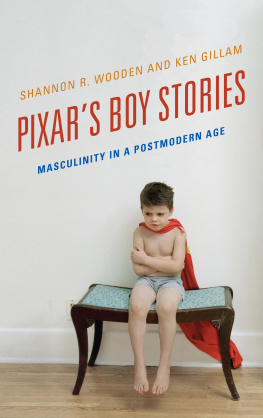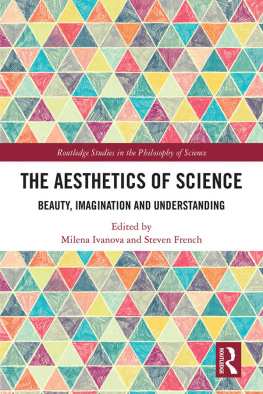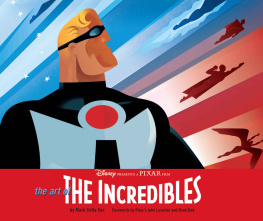19. and 20.
22 and 23.
ACKNOWLEDGMENTS
This book would not have been possible without the support of the University of WisconsinMilwaukee. I am indebted to my UWM colleagues at the Center for International Education and in the Media, Cinema, and Digital Studies program for their encouragement and conversation. I am particularly grateful to EJ Basa, Mike Beebe, Tim Brown, Dalia M.A. Gomaa, Bridget Kies, Molly McCourt, Adam Ochonicky, Kristi Prins, Ali Sperling, Heather Warren-Crow, and Hyejin Yoon for their insightful commentary at various stages of this project. I also want to acknowledge Tulane University, the Society for Animation Studies, and the Society for Cinema and Media Studies and its Animated Media Scholarly Interest Group for providing opportunities for me to present my research at conferences and invited talks. The generous spirit of the scholars attending these events has been vital to this project. For their assistance researching Pixar Animation Studios, I want to thank Maggie Werner, Aileen Morrissey, Brett Warne, and Aurica Hayes. Jon Browns (jontbrown.com) artwork on the cover provided a wonderful final touch, and I cannot thank him enough for his time and talent.
It was a privilege to think through this project with a vibrant community of scholars. My work benefited from the readings of Richard Grusin, Elena Gorfinkel, Esther Leslie, and Suzanne Buchan. I extend my sincere thanks to them for their thoughtfulness and guidance. Kalling Heck and Mark Heimermann were brilliant resources throughout the writing process, and I am deeply grateful for their friendship. During my time in Milwaukee the advice and ideas offered by Peter Paik and Kennan Ferguson proved incredibly valuable and will continue to influence my thinking and writing in the future. Patrice Petro deserves more acknowledgment and thanks than any single statement could muster. Her intelligence, consistent presence, political sensibility, and courage make her an exemplary adviser and colleague, and I am very grateful for having had the chance to work with her.
Finally, I want to thank my family for their kind encouragement and support. Writing a book takes time, and I sincerely appreciate the gracious treatment I have received while taking the time to write.
Introduction
This book explores Pixar Animation Studios feature films through a series of aesthetic concepts. These include the uncanny integrity of digital commodities in the Toy Story films (Lasseter 1995; Lasseter, Unkrich, and Brannon 1999; Unkrich 2010); the technological sublime in Monsters, Inc. (Docter, Silverman, and Unkrich 2001); exceptional and fantastic bodies and spaces in The Incredibles (Bird 2004); and taste, sensation, and becoming in Ratatouille (Bird and Pinkava 2007). All of these analyses are grounded in the idea that there is a tradition of animated films addressing aesthetic experience and that this tradition continues in Pixars storytelling. The narratives, characters, and carefully designed worlds raise these aesthetic concepts to varying degrees, but primarily, this address of aesthetic experience can be observed through two, interactive levels: characters discovering their worlds and audiences watching and thinking about that discovery.
Emerging from this idea is the notion that mapping such a tradition through film and animation theory and through philosophy and political theory delineates a critical methodology for analyzing animated films and producing cultural criticism. This focus on aesthetics is historically and theoretically appropriate for analyzing animated films that develop imaginary characters and worlds. And it is equally appropriate for investigating cultural, economic, environmental, and technological transformation in the digital age. The breadth of this dual claim speaks to the pervasiveness of animation across media environments but also to the expansion of animation as a category of inquiry within cinema and media studies. The term animation is certainly capable of referring to all moving images and even other media featuring fabricated movement. Moreover, while the term animation evolves and moving images and screens proliferate, an affinity has seemingly developed between animation and the abstract, technological, moving parts of life and culture in late capitalist society. The study of animation and animated films has the potential to illuminate not only our digital context and the prevalence of moving images but also our aesthetic context given that capitalism, technology, and natural phenomena stimulate and transform our senses, feelings, and judgments.
Before diving into this investigation, I want to discuss how exactly this abstract and academic line of thought follows from the entertaining products of a major commercial animation studio. Does this theoretical discourse blatantly disregard Pixar Studios own philosophy, organization, and commercial and cultural goals? Or does the terrain of aesthetics subtend both the studios entertainment art and its generative capacity for theory and criticism? This introduction begins to think through these questions by discussing the critical commentary surrounding Pixar Studios, its films, its brand, and its creative culture. From here the conversation turns toward the aesthetic and artistic ideas that are fundamental to Pixar and its films. This discussion sets up the subsequent chapters, which explore how animated films have addressed aesthetic experience, how Pixar films build on that legacy, and how analyzing these films generates cultural criticism.
PIXAR ANIMATION STUDIOS
As the first studio to produce a computer-animated feature film, Pixar usually presents its history as an entrepreneurial success story, which This American success story follows a group of brilliant computer scientists and engineers who managed to create breakthrough technologies in computer graphics, acquire the patronage of investors (Alexander Schure, George Lucas, and Steve Jobs, among others) over decades of development, and hire talented animators even before becoming a filmmaking studio. The dream uniting these creative technicians over the years was to make a feature film with computer animation, an impossible feat when their journey began. The films finally produced by Pixar during the late 1990s and early 2000s correlate with the studios cultural and economic success in that they explicitly address dynamics of new and old media and express themes associated with the entrepreneurial culture of Silicon Valley. The studios cultural impact can be measured by the number of historians and teachers using Pixars shorts and films to mark the advances of computer animation and CGI in the film industry. And the ease with which Pixars animated characters traverse transmedia environments marks the increasing ubiquity of software and screen culture. The cultural relevance and consistent reflexivity of Pixars products in conjunction with the stylistic continuity of the studios computer animation has contributed to building an iconic, profitable brand. And while these early films are part of a broad history of innovation and globalization, the studio remains known for managing its production processes in-house, for developing proprietary software, and for maintaining a consistent creative culture and labor force.

